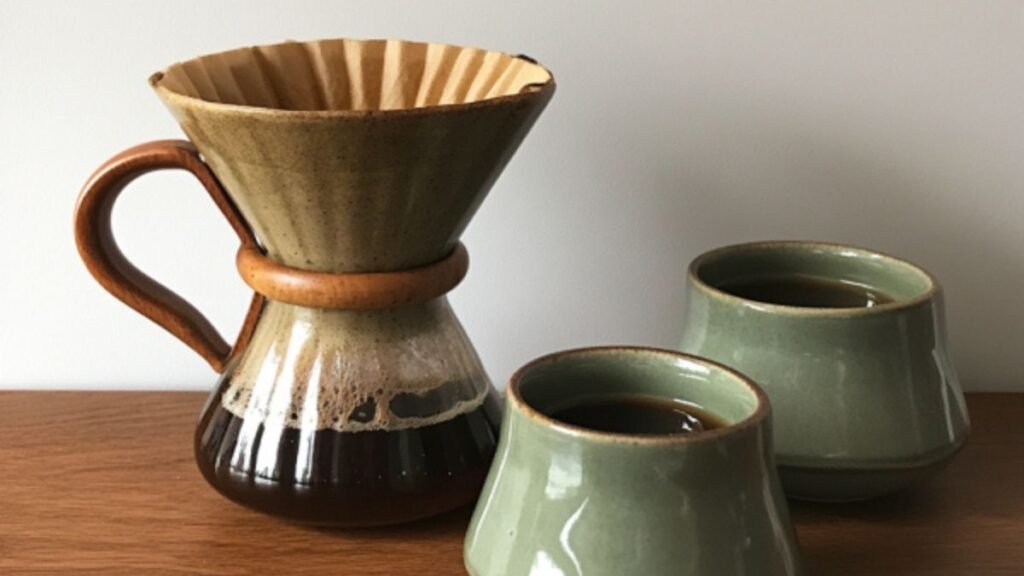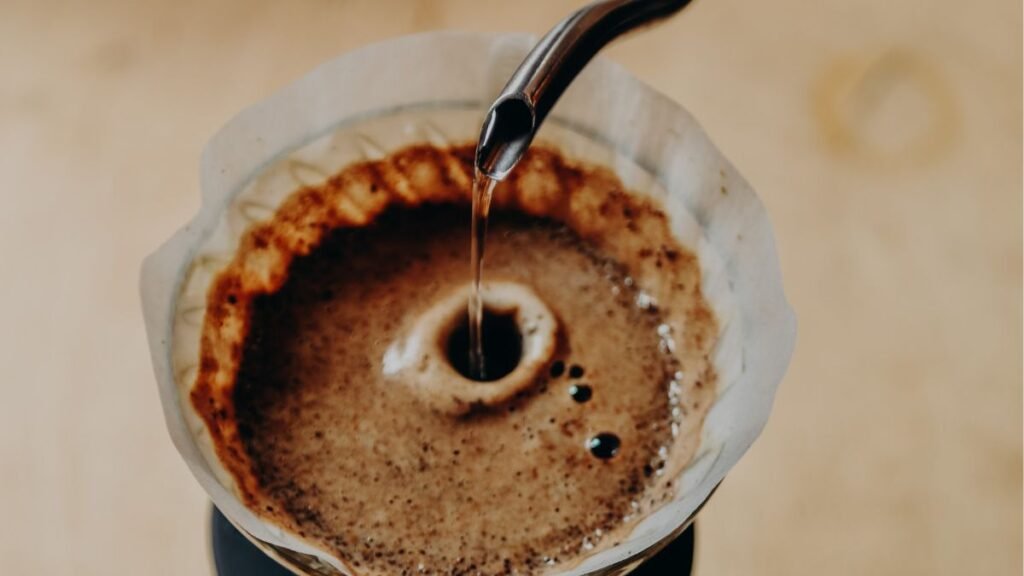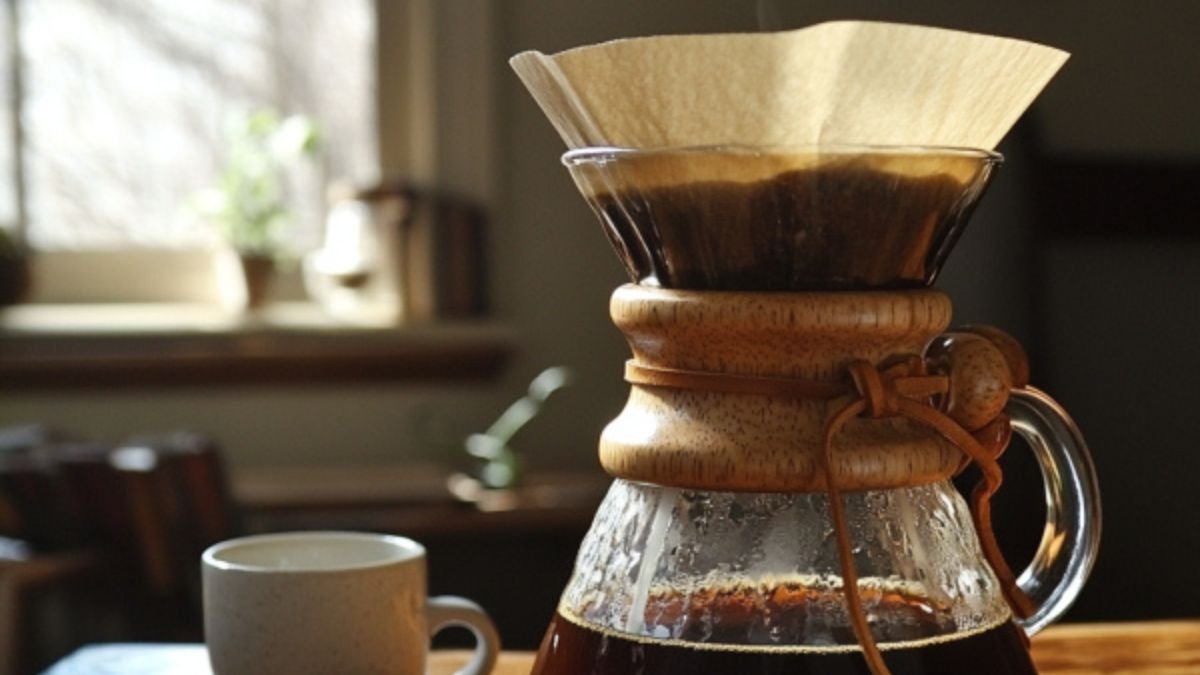Pour-over coffee is a beloved brewing method that allows you to control every aspect of the brewing process, resulting in a clean, aromatic cup of coffee.
It’s a simple yet precise technique that requires just a few key elements: high-quality coffee beans, hot water, and a steady pour. Whether you’re a coffee enthusiast looking to perfect your pour-over technique or a beginner eager to learn, this guide will walk you through the steps to brew the perfect cup of pour-over coffee every time.
What is Pour-Over Coffee?
Pour-over coffee is a manual brewing method in which hot water is poured over ground coffee, which then passes through a filter and into a coffee pot or carafe.
Unlike automatic coffee makers, pour-over brewing allows you to have full control over the water temperature, pour rate, and coffee saturation, making it a favorite among coffee aficionados. The result is a clean, smooth, and flavorful cup with a balanced taste profile.
Key Characteristics of Pour-Over Coffee:
- Clean and aromatic: The filter removes oils and fine particles from the coffee, resulting in a clean, crisp cup.
- Control over brewing: You can adjust variables like water temperature, pouring technique, and brew time to suit your personal taste.
- Manual and slow brewing: Pour-over requires a steady, controlled pour, which results in a more precise extraction compared to automatic brewing methods.
Why Choose Pour-Over Coffee?

Pour-over coffee offers several benefits that make it a popular choice for coffee lovers. Here are a few reasons why you should give it a try:
1. Rich Flavor and Clarity
Pour-over coffee is known for its rich flavor and clarity. Since the water is poured slowly and evenly over the coffee grounds, it allows for a more thorough extraction of the coffee’s flavors, resulting in a bright and well-balanced cup. The filter also removes unwanted oils and fine grounds, resulting in a smooth, clean taste.
2. Full Control Over Brewing Variables
One of the biggest advantages of pour-over brewing is the level of control it gives you. You can adjust the grind size, water temperature, pour rate, and brew time, allowing you to tailor the coffee to your taste preferences. Whether you prefer a light, floral cup or a bold, full-bodied brew, pour-over allows you to experiment and refine your technique.
3. Simple and Elegant
Pour-over brewing doesn’t require complicated machines or gadgets. All you need is a pour-over dripper, a filter, and some hot water. The simplicity of this method makes it an accessible option for anyone who wants to brew high-quality coffee without the need for expensive equipment.
4. Customizable and Versatile
Pour-over brewing can be used to make a wide range of coffee styles, from light and fruity brews to strong, dark cups. You can adjust the brewing method depending on your personal preferences, and even experiment with different brewing devices, such as the Chemex or the Hario V60.
What You’ll Need for Pour-Over Coffee
Before you start brewing, make sure you have the following equipment:
1. Pour-Over Dripper
The most common pour-over drippers are the Hario V60 and Chemex, both of which have different shapes and characteristics. The Hario V60 is a popular choice due to its affordability and versatility, while the Chemex offers a larger brewing capacity and a unique, elegant design. Choose a dripper that suits your brewing style and the number of cups you want to make.
2. Coffee Filter
You’ll need paper filters that fit your pour-over dripper. Filters are essential for ensuring a clean cup of coffee, as they prevent coffee grounds from slipping into the brewed coffee. The Hario V60 uses conical paper filters, while the Chemex uses square or rectangle-shaped filters.
3. Fresh Coffee Beans
High-quality, fresh coffee beans are crucial to achieving a great pour-over coffee. Beans should be freshly roasted and ground just before brewing. For pour-over, you’ll need a medium grind that resembles granulated sugar—too fine of a grind can result in over-extraction, while too coarse can lead to under-extraction.
4. Burr Grinder
A burr grinder is recommended for pour-over brewing because it provides a consistent grind size, which is essential for even extraction. A consistent grind will help ensure that your coffee tastes balanced and flavorful.
5. Hot Water
For the best pour-over coffee, use water that’s between 195°F and 205°F (90°C–96°C). If the water is too hot, it can extract undesirable flavors from the coffee, while water that’s too cool can result in a weak and under-extracted cup.
6. Gooseneck Kettle
A gooseneck kettle is ideal for pour-over brewing because its narrow spout allows for precise pouring control. This helps you pour the water evenly over the coffee grounds, ensuring uniform extraction. Many gooseneck kettles also have temperature control, which makes it easier to achieve the ideal water temperature.
How to Brew the Perfect Pour-Over Coffee: Step-by-Step Guide

Follow these simple steps to brew a perfect cup of pour-over coffee:
Step 1: Boil Water
Heat your water to between 195°F and 205°F (90°C–96°C). If you don’t have a thermometer, bring the water to a boil and let it sit for 30 seconds to cool slightly before pouring.
Step 2: Prepare Your Filter and Dripper
Place the coffee filter into the dripper. If you’re using a paper filter, rinse it with hot water to remove any papery taste and preheat the dripper. Discard the rinse water from the dripper, and place the dripper on top of your mug or carafe.
Step 3: Measure and Grind the Coffee
Measure about 1 to 2 tablespoons of coffee per 6 ounces of water. For a more precise measurement, you can use a scale. Grind the coffee to a medium consistency, similar to granulated sugar.
Step 4: Add Coffee Grounds to the Filter
Add the ground coffee to the filter, leveling it off to ensure an even surface. This helps the water flow evenly through the coffee grounds.
Step 5: Begin Pouring Water (Bloom Phase)
Start by pouring a small amount of hot water (about 30–40 ml) in a circular motion to saturate the coffee grounds. Allow the coffee to “bloom” for 30 seconds. This phase allows the coffee to release carbon dioxide, which can interfere with extraction. Blooming ensures a smoother, more even extraction.
Step 6: Pour the Remaining Water
After the bloom phase, continue pouring water in a slow, circular motion. Try to pour in small amounts at a time, allowing the water to saturate the grounds without flooding them. This helps ensure an even extraction. Aim for a total brewing time of 3–4 minutes, but feel free to adjust the pouring speed based on your preference.
Step 7: Let the Coffee Drip
After you’ve finished pouring, allow the coffee to drip through the filter into the carafe or mug. Once the dripping stops, discard the used coffee grounds and filter.
Step 8: Serve and Enjoy
Pour the brewed coffee into your mug and enjoy it immediately. You can adjust the strength of the coffee by adding more or less water, depending on your preference.
Tips for Perfecting Your Pour-Over Coffee
Here are some additional tips to help you perfect your pour-over brewing technique:
1. Experiment with Pouring Technique
Try adjusting your pouring technique to experiment with the flavor of your coffee. A steady, spiral pour will result in even extraction, while pouring in a more aggressive manner may lead to over-extraction and bitterness.
2. Use Fresh Coffee Beans
For the best taste, always use fresh, high-quality coffee beans. Freshly roasted beans provide the best flavor and aroma. Avoid pre-ground coffee, as it tends to lose its flavor quickly.
3. Monitor Your Water Temperature
Ensure that your water is within the ideal range (195°F–205°F or 90°C–96°C) for optimal extraction. Too hot or too cold water can result in a sour or bitter taste.
4. Use a Scale for Consistency
Using a digital scale helps ensure that you use the right ratio of coffee to water every time. This consistency will help you achieve the same great taste with every brew.
5. Adjust Brew Time
If your coffee is too weak, try increasing the brew time. If it’s too strong or bitter, reduce the brew time slightly.
Conclusion: Perfecting Your Pour-Over Brew
Pour-over coffee is a versatile and rewarding brewing method that allows you to control the flavor and strength of your coffee.
By following the steps in this guide and experimenting with different variables like grind size, pouring technique, and water temperature, you can brew the perfect cup of coffee tailored to your taste. Whether you’re brewing a single cup in the morning or serving a group of friends, pour-over coffee offers a delicious and satisfying way to enjoy your coffee.
